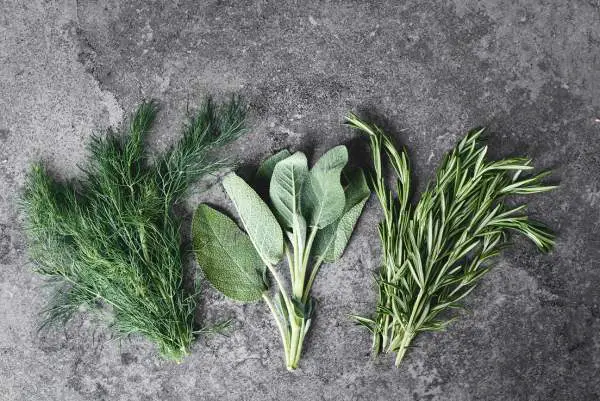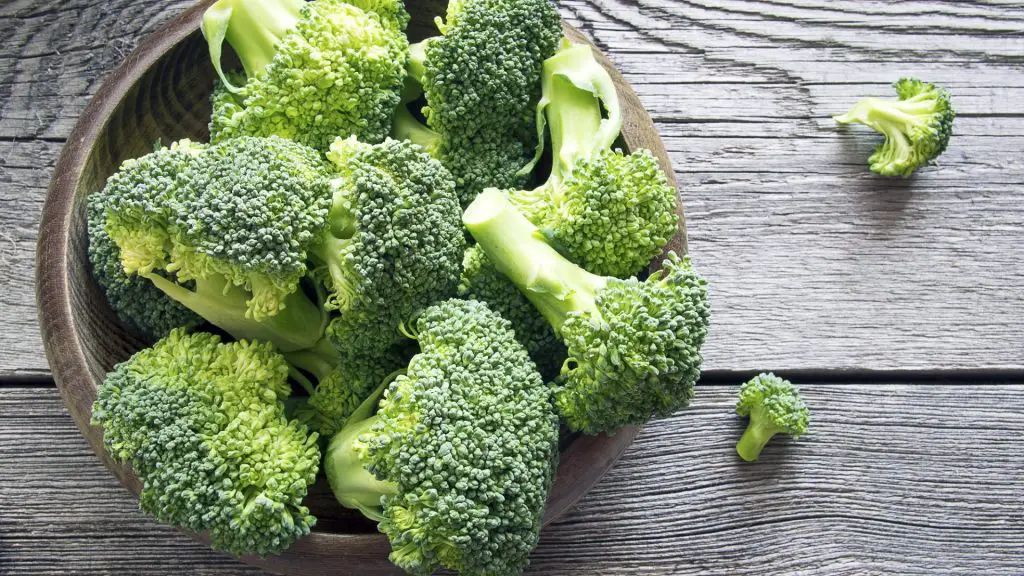Bamboo is an excellent plant to keep around your home; not only is it beautiful but it is pretty easy to care for and can increase the oxygen levels in your home significantly. You then have the Lucky Bamboo, which individuals like to have in case it will bring extra luck to them.
When you trim your bamboo or want to add more to your home, you have a few choices available to you for proper growth.
One question often asked bamboo owners is whether or not they can grow bamboo using hydroponics? In the most basic way, you can do this by planting bamboo cuttings in any decorative container filled with water. This is a similar method to how many grow their bamboo when they plant the clippings in soil; however, no soil is needed for quality growth as bamboo will not rot in water like many other houseplants.
You can use cuttings of a well-established bamboo plant and cultivate them in a basic hydroponic system, and we will see how you can create a better hydroponic container. You need to be sure your bamboo cuttings remain erect in the water base and establish a proper root system to begin growing. When the roots are in place, the caring process is reasonably straightforward for new gardeners.
Best Bamboo to Grow Hydroponically
Indeed, some certain bamboo species are not suited for indoor growth because they can grow fast in a short amount of time.
With this, some indoor species of bamboo are hard to maintain and grow hydroponically.
The trendiest form of bamboo you’ll ever see grown hydroponically is Lucky Bamboo. These are most commonly seen on office desks, in businesses, or even just in many homes. They are much a part of Feng Shui, and it is believed they bring good luck and fortune to their owners.
One great reason many choose Lucky Bamboo, particularly as a starter plant, is that it is both easy to grow and hard to kill. Their sturdy stems are perfect for growth in water and can survive in many lighting conditions. While not devoted to the care of your plant, it will live for some time with little supervision.
One other reason many choose Lucky Bamboo is that it is so easy to find and relatively cheap to buy. Many of these plants are from Taiwan or China, where professional growers braid and twist stems to create elaborate shapes. You can, of course, purchase uncomplicated stems which are cheaper and equally beautiful. Or you can grow your won, and then learn how you can twist and braid to deliver these ornate shapes.
Bamboo Grow and Care Guide
If you are ready to start growing bamboo hydroponically, it is a relatively straightforward process and does not take a lot of extra work. However, there are a few key steps that you need to take to ensure that your bamboo grows appropriately.
You do need to be sure you have a suitable donor plant, to begin with. The following steps take you through all you need to start growing hydroponic Lucky Bamboo
Finding the Right Donor Plant
Step One
Find a donor plant that looks appealing. Rather than selecting the first one you come across, it is worth seeing one that is healthy in the beginning. It should be easy to source these from a local garden center or nursery. You can even pick these up at larger supermarkets if they have a flower section. Depending on where you look for them, they may have a different name. This can be the generic Lucky Bamboo or Ribbon Plant. On occasions, you may find them with their Latin name of Dracaena Sanderiana.
Be sure to look for one, which is a vibrant green. Even as much as caring for bamboo can be easy, you don’t want to begin your journey with one that isn’t healthy. It may be tempting to select a larger plant, yet this doesn’t mean it will be the best option. Some plants give better cuttings when they are going through their growth rather than being mature.
Bamboo selection tips:
- It should have even green color with no yellowing, bruising, or spots.
- Stalks need to be a consistent color from the tip to the base where they are planted.
- Leaves shouldn’t have any brown on the tips.
Step Two
Check around the base of the plant to see it has been planted correctly. You can also smell around the lip of the pot to make sure there isn’t any funny smell. While these are resilient, if they have been planted incorrectly, or they are suffering, there can be an aroma that smells sour. This is a sign of a sick plant that may not grow any further.
If there is a smell, it won’t be the same smell you get from flowers. Bamboo doesn’t have any of the same scents, but if they are overwatered, you can begin to smell the bacterial buildup, which makes the sour smell.
You will need to check for signs of watering. Depending on how it has been planted, you can find them in the soil as well as the more common hydroponic method of just a growing media and water. If in soil, check it is damp but not waterlogged, and if it is in pebbles or an alternative, check there is water, yet the pot isn’t too full.
Planting Your Lucky Bamboo
Step One
Because you are taking the hydroponic route for your bamboo, you will need to be sure it has the right kind of water. Water from the faucet can contain chlorine or chloramine, depending on where you live and how the water has been processed.
Rainwater or aquarium water is ideal, yet if you need water from the faucet, you can leave some in an uncovered bucket in sunlight for 24 hours. Chlorine breaks down at this time and leaves the water, which will be suitable.
Chloramine is harder to get rid of, and you will need to purchase Campden tablets. A more straightforward option can be to cut a lemon in half and leave this in your water for 24-hours. This can also eliminate any chlorine
You will need a firm growing media to hold the stems in place. Depending on your pot, you may be able to use hydroton pebbles. You can use a mix of these with small stones as they retain moisture while stones offer support.
For water, be sure your plant has enough to cover the bottom of the base of the roots. You will need to change the water regularly, as this can help prevent root rot. It is a good practice to give your pot and pebbles a rinse with your plant each time you do this.
Step Two
Your chosen pot will need to be around 2-inches larger in diameter than your plant. While you will have a container that your donor plant comes in, it may not fit in with your decor or offer the right sort of drainage.
One of the best pots when using pebbles is a clear one; this lets you know the watering level, yet you will need to keep it out of direct sunlight, or your plant will suffer from air pruning once they spread outward and reach the glass.
Although the above is like one of the basic hydroponic environments, this stage can be seen as even closer. You will need to add light fertilizer to aid faster growth and to be sure your Lucky Bamboo obtains all the nutrients it requires.
As with any hydroponic growing, too many nutrients will cause more harm than do the plants any good. You can easily make your liquid fertilizer, or you can purchase bottles of nutrients that are specific for hydroponic plants. If using these, you will need a weak solution, and even 1/4 strength may be too strong. One or two drops may be enough, considering you will be changing the water frequently.
Propagating Lucky Bamboo
The above steps will need to be followed when you are growing any bamboo, yet if you have followed the above for your donor plant and changed the pot it is in, there will come the time when you begin to propagate your plant and take cuttings to grow more.
This is after all the object of Lucky Bamboo. You can spread it around your home or hand it out to friends or family.
As your bamboo plant begins growing, there will be a stage where it starts to come too tall. This is the stage where you can now take cuttings and replant them. This also has the benefit of stopping your plant from becoming overcrowded.
Here, you take the most extended stalk and carefully remove the smaller leaves from the top of the new shoot. Using a sharp, sterile knife (wipe in alcohol), cut the offshoot so there are still two plant nodes (these are the raised lumps on the stem) that will remain on the cut stem. You can use scissors, yet there can be the issue of crushing the stem.
Place the cut end in a bowl of clean, distilled water. You keep this in a shaded area for one to two months until there are signs of roots forming.
When you see these new roots, you can follow the first steps you went through with your new pot and your pebbles. It is precisely the same for cuttings as it is for the original donor plant. With these new shoots, you will need to be very careful with the number of nutrients you deliver. Because they are young, a solution that is too strong can kill them straight away. One drop may be sufficient until your bamboo plant begins to grow on its own.
Lucky Bamboo Care
When your plant begins growing, there isn’t much care and attention you need to give it. There are just a few things you need to be aware of to allow it to grow to its full potential and make sure it doesn’t die in the early days of growth.
Be careful when watering. Bamboo plants don’t need lots of water. Too much will be harmful and can lead to suffocation, thus leading to root rot.
Once a week, watering should be sufficient, although there does need to be water present around the rooting mass. This way it can take what it needs without becoming dry, or it is left sitting in a puddle of water.
Bamboo of this variety, as well as many others, doesn’t like bright sunlight. If you see it growing in its natural habitat, it will be growing in shaded areas and protected from the sun by trees or other taller plants. Nevertheless, you can leave your plants in a well-lit area, be sure they won’t be hit by intense sun.
In many cases, bamboo of this nature isn’t placed directly in windows, and it can happily sit in other areas around the home where there is lots of natural light. Kitchens and some bathrooms are often areas where you see these sitting luckily.
You should keep bamboo away from vents or doorways where there can be wide fluctuations in temperature. Moderate temperature changes are okay if they are internal like a room opening, yet if it is from an exterior door, then your plant can suffer from shock. The ideal temperatures for optimum growth is a range of 65°F and 90°F.
While tending to your bamboo, you may often see some leaves which are yellowing or already dead. One of the leading causes for this is the plant isn’t getting enough water, or it has been sitting in too much sunlight. The light issue is easy to rectify; however, this can affect the water problem. The bamboo may be drinking more in compensation for being in bright sunlight, and because of this, the water level drops lower than where its roots can reach. You can trim any parts which are yellow or remove the entire leaf.
While using some sterile shears or scissors will enable you to remove the yellow parts, removing the full leaf means the plant won’t be wasting energy on a deformed leaf.
To remove the full leaf, gently pull it down on the stalk while supporting your plant. The foliage should remove itself from the stem once you do this.
Styling Bamboo to Make it Lucky
Bamboo may be an everyday kind of plant, yet when you have lucky bamboo, which is formed into swirls curls, and many other shapes, it offers a look that no other plant can deliver.
This is one of the reasons why it is so popular, and once it has been formed into these intricate shapes, that may be where people think the luck comes from.
The way you do this is to take younger stalks and stems, which are still developing, and these will be soft so that you can manipulate these around each other.
The easiest way you can curl your bamboo is to take a cardboard carton and cut off one side and the bottom.
Place the box on one side of your plant, so the open side faces the source of light. Because plants always lean toward the light, your bamboo will begin arcing in the direction of the sun.
Once you see your plant is bending, you can rotate the pot so it will twist at another angle as it again tries to reach the light.
Another more forceful way to get tight curls is to wrap the wire around the stalks after crisscrossing them gently. These will grow following the lines you set, so the bigger they get, the more wire you will need to add.
Good fortune can be had by tying a gold ribbon around the stems to hold them against each other. Once your plant is growing, it will take on the shapes you have set, and will look like a lucky trinket wrapped in its gold ribbon.
Conclusion
While this kind of plant isn’t making full use of a hydroponic system, there is no getting away from it that you are using the most basic hydroponic techniques. If you are using plain water most of the time, the inclusion of fertilizer every couple of weeks can be enough to keep it adequately fed.
However, if you do have an aquarium, this water is abundant in goodness, even if it may be a little murky.
Bamboo may brighten up the home, yet because you can propagate from it freely, you may even consider making it into a part-time occupation to help pay the running costs of your full-sized hydroponic system.
If anything, it is an excellent way to get anyone interested in home gardening. It may take a little care now and again, but it won’t suffer if you forget once and a while.





